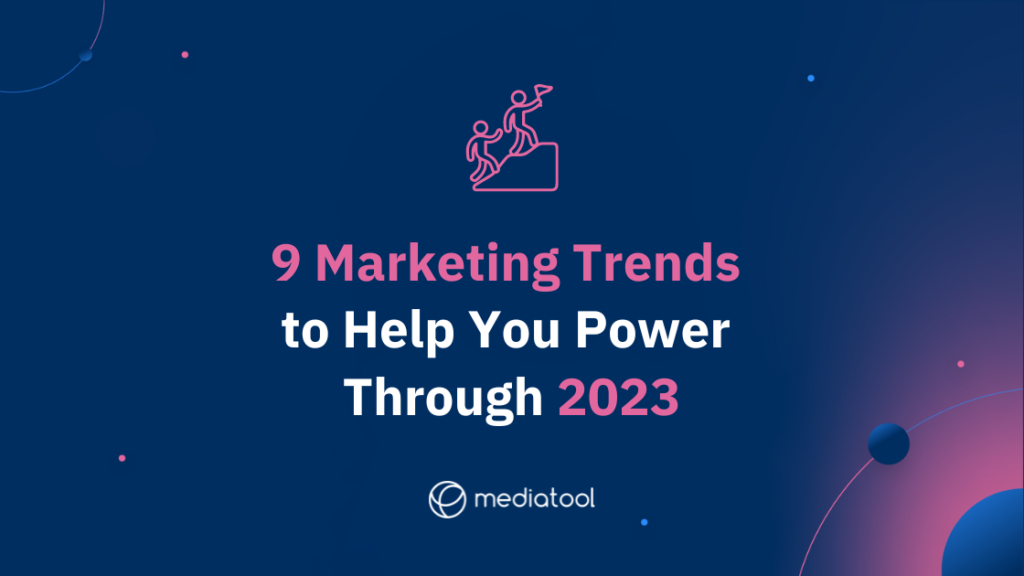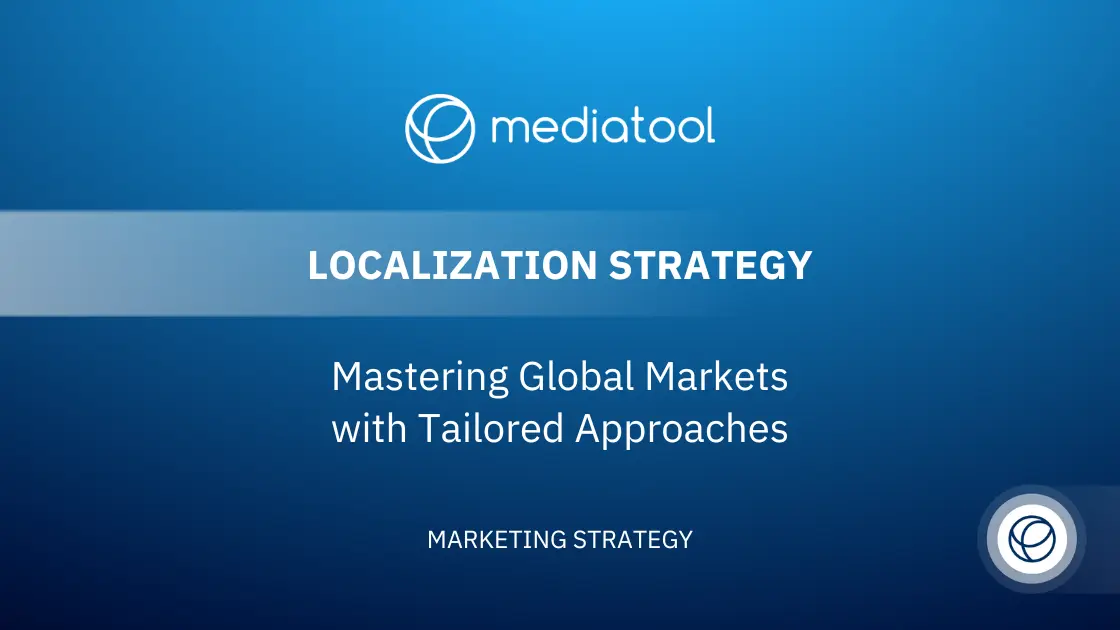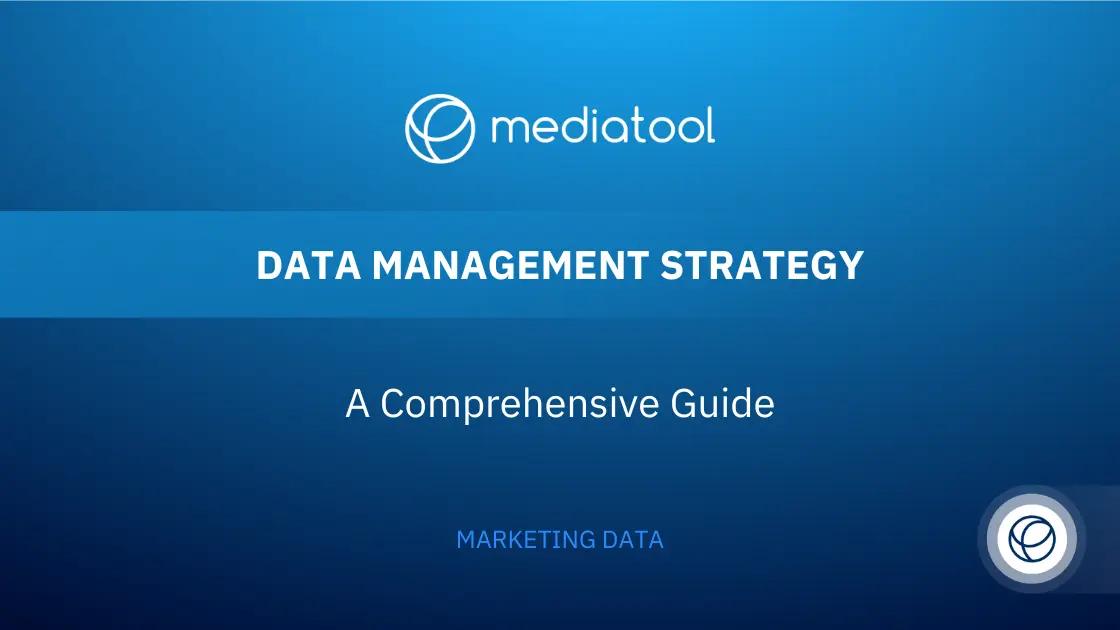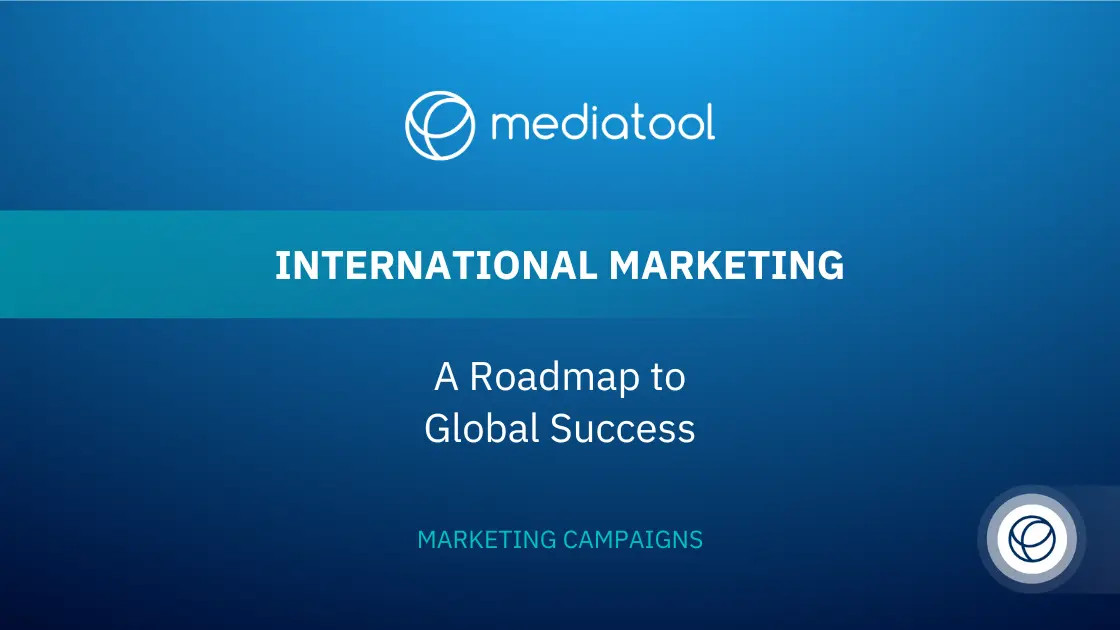Attention is the New Currency: Marketing Trends in 2023 to Incorporate into Your Strategy
This guide summarizes the 2023 marketing trends you must look out for to skyrocket your business.
Whether you’re a seasoned professional or just starting, it’s crucial to incorporate the latest marketing trends into your strategy to stay competitive and relevant in today’s marketplace.
A well-informed marketing strategy is a driving force behind building a successful business.
What consumers want, need, and expect from brands today looks nowhere near what it did five years ago. Digital marketing trends constantly change, forcing businesses to adapt their strategies accordingly.
Unfortunately, not all companies are quick to keep up with these changes. You need to scour the latest reports, talk to influential industry experts for hours, and monitor endless consumer behavior data to stay ahead of the curve.
1. Increasing Video and Livestreaming Usage
Like 2022 marketing trends, brands will continue investing heavily in YouTube, TikTok, and Instagram and will use the power of video content to engage and interact with consumers in 2023.
Video remains an increasingly popular medium for storytelling.
Livestreaming is rapidly gaining traction and allows brands to build closer relationships with their audiences and foster greater trust.
Live streams showcase the “behind-the-scenes” aspects of your business, create deeper connections with customers by hosting Q&As and webinars, and offer more personalized interactions through video messaging.
Short-form Video Will See the Most Growth

YouTube Shorts, Instagram Reels, and TikTok are all short-form video formats that have exploded in recent years.
Virality is a game changer in today’s social media-driven world, which is why short-form video has become so popular. Short videos are the ultimate way to engage and entertain audiences, tap into trending topics, and go viral with relatively little effort and cost.
In 2023, businesses should focus on incorporating short-form videos into their marketing strategy. Whether creating unique branded content, using user-generated content (UGC), or partnering with influencers to promote your brand, short-form videos are a tested way for brands of all sizes to reach wider audiences and build meaningful connections.
2. Return to In-Person Events
With the pandemic behind us, businesses will return to host in-person events to connect with customers and build brand awareness. Whether creating a pop-up shop in your local community, sponsoring a major trade show, or attending an industry conference, there are many creative ways to incorporate this tried-and-true marketing strategy into your business.
Last year, 50 percent of companies anticipated attending more in-person events in 2022 than in 2021. This online marketing trend is expected to continue in 2023 as businesses recognize the value of face-to-face interactions in converting leads and establishing long-term customer relationships.
If you’re attending an in-person event, use event intelligence to find out who’s attending, what they’re talking about, and how influential they are. Preparation helps you better engage with attendees and connect with key prospects in your industry.
3. Podcasting
Twenty-six percent of content creators use podcasting to reach their audiences, while 26 percent of organizations use podcasts to distribute their content. Podcasts help you reach highly engaged audiences and create original, engaging content that listeners can easily download or stream. You can also partner with influencers in your industry to build brand awareness.
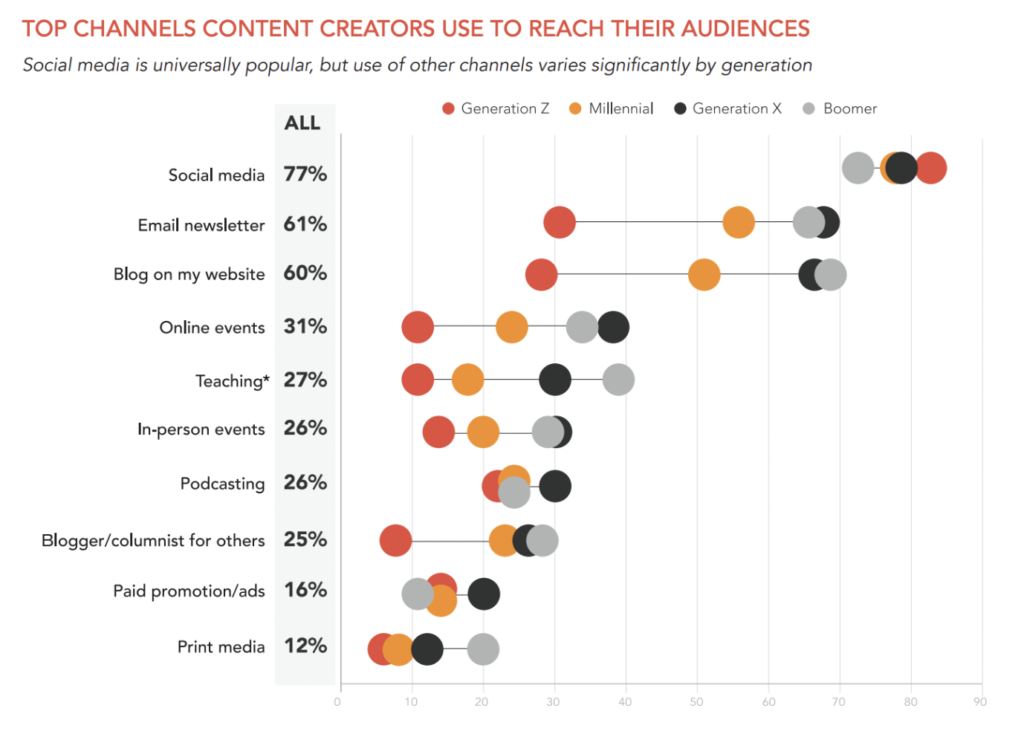
In 2023, podcasting will continue to grow as a marketing tool for brands of all sizes. It’s an excellent way to build thought leadership, develop niche expertise, and create more intimate customer connections. Whether partnering with other brands, influencers, or industry experts, podcasting can help you establish a competitive edge in your market and enhance your business results.
4. Interactive Marketing
Interactive marketing is a strategy that involves incorporating interactive elements such as games, quizzes, polls, and calculators into your online content. It helps capture attention and engage users on a deeper level.
Whether you’re creating an online game that ties into your brand, partnering with an influencer on a social media quiz, or incorporating polling into your website content, there are many ways to take advantage of this marketing strategy. Focus on creating high-quality content that is relevant and engaging for your audience to enhance your success with interactive marketing.
Also, test different elements of your campaigns to find what works best for your particular goals and objectives. For example, try A/B testing your interactive marketing campaigns to increase website traffic to determine which drives more people to your site.
Gamification
Gamification is one example of interactive marketing that uses game-like elements to engage and entertain audiences. Whether in education, recruitment, or e-commerce, brands use gamification to increase their presence and reach new audiences. Sephora, for example, uses gamification to promote its rewards program, engaging customers with fun challenges and rewarding them with discounts, makeup samples, and other perks.
Conversational Marketing: Chatbots are Getting Better
By 2025, 95 percent of customer interactions with brands will be via artificial intelligence (AI), such as chatbots. Conversational marketing allows brands to interact with customers on a more personal level.
With natural language processing (NLP) and machine learning constantly improving, brands can now use chatbots to address customer concerns and answer real-time questions. Whether you’re offering support or generating leads through your website or social media platforms, chatbots can help you boost customer engagement, improve customer satisfaction, and drive sales.
5. Omnichannel Marketing: Integrated Online-Offline Customer Experience
Omnichannel marketing is a holistic strategy that creates an integrated customer experience across all channels and touchpoints.
It helps brands build stronger relationships with their audiences and drive more sales by engaging customers through multiple channels, from social media to in-store interactions.
An integrated online-offline customer experience is essential for businesses looking to stay competitive. Twenty-seven percent of senior marketers believe their omnichannel journeys align, showing room for improvement and innovation.
Some critical tactics for delivering an effective omnichannel customer experience include personalizing your communication, using data and analytics to target customers with the right message at the right time, and providing consistent messaging across all channels. Another important factor is integrating your sales and marketing teams to ensure that the customer journey is seamless, regardless of how they interact with your brand.
Greater Focus on Customer Experience (CX)
Seventeen percent of consumers say they would stop doing business with a company if another company would provide a better customer experience. 45 percent of consumers globally also say they are somewhat likely to stop using a brand if they don’t personalize their customer experience. Businesses compete on multiple fronts – price, quality, speed of delivery – but it’s all about customer experience.
Omnichannel marketing is essential for brands that want to stay competitive in today’s digital landscape. By integrating online and offline channels and consistently delivering high-quality experiences across all touchpoints, brands can build stronger relationships with their customers and drive more sales.
Whether offering superior customer support, incorporating personalized recommendations in your marketing campaigns, or delivering timely promotions via email and SMS, omnichannel marketing can help you create personalized experiences that keep customers coming back for more.
6. Gen Z Will Continue to Influence Marketing More Than Millennials
Gen Z is a demographic cohort that has grown up in a world dominated by digital media and technology. As a result, their decision-making process differs significantly from that of their millennial counterparts.
For example:
-
- 50 percent of Gen Z individuals say companies should take a stance on social issues (e.g., climate change, racial justice, and LGBTQ+ rights).
- 51 percent of Gen Z individuals said they are more likely to purchase from a company that treats its employees well.
- 55 percent of Gen Z individuals say that recommendations from influencers are one of the most critical factors in their purchase decision.
- 51 percent of Gen Z consumers rated sustainability as somewhat important when purchasing.
Marketing to Gen Z isn’t just about understanding how they shop and consume media. It’s also about understanding their values, behaviors, and attitudes. Brands that want to connect with Gen Z can leverage influencers, incorporate social causes into their marketing strategies, and focus on sustainability initiatives. By adapting to the needs and preferences of this tech-savvy generation, brands can stay ahead of the competition and improve their bottom line.
User-Generated Content
One effective way to market to Gen Z is through user-generated content (UGC). With UGC, brands can leverage the opinions and recommendations of their consumers to build trust and credibility among younger audiences. This may involve partnering with social influencers or encouraging customers to create and share their product reviews, testimonials, photos, or videos.
The creator economy has become a powerful force in today’s digital landscape, and marketing to Gen Z means paying close attention to content marketing trends. The creator economy had an estimated market size of $104 billion in 2022 and continues to grow as more brands incorporate UGC into their marketing strategies. By tapping into the power of user-generated content, brands can connect with Gen Z consumers deeper and drive more sales.
7. Increase in Content Marketing Budgets
Most content marketers currently work in small teams, where they often manage every piece of content for the entire company. However, as the marketing landscape evolves and grows more competitive, companies will hire or contract additional marketing specialists to handle specific content campaigns.
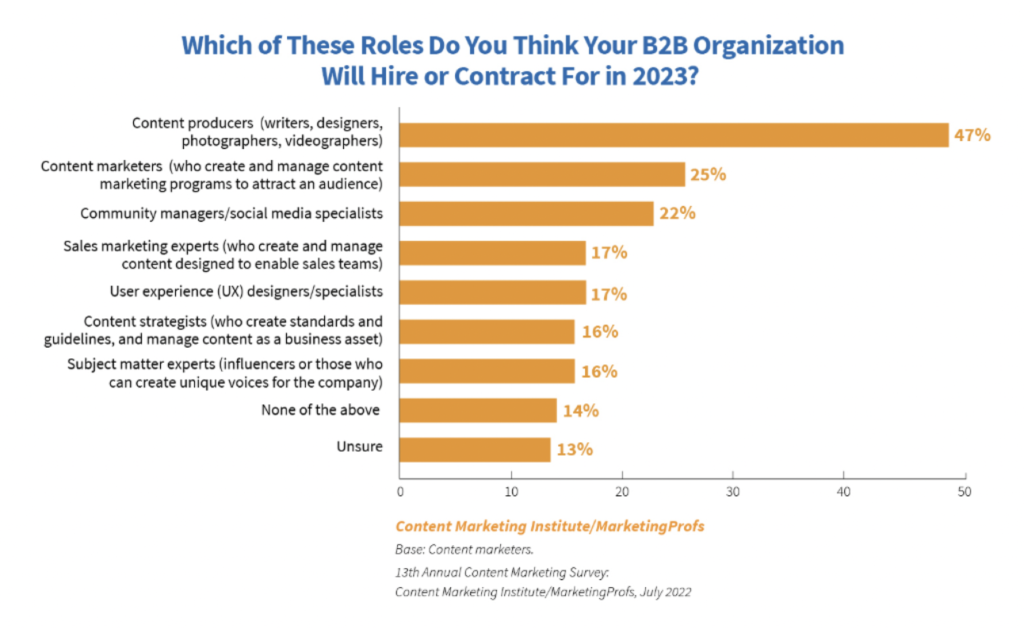
This increase in content marketing budgets is also driving growth in using paid distribution channels, including social media and display ads. With a larger budget, marketers can experiment with new tactics and target more specific audiences to reach their goals faster.
8. Inclusive Marketing
46 percent of marketers believe that championing diversity, equity, and inclusion means being culturally relevant on social media for brands. Inclusive marketing strategies can help brands better connect with audiences across different cultures, languages, and backgrounds.
To develop an inclusive marketing strategy, brands should start by conducting a cultural audit of their target audience. This audit involves gathering data on key demographics like age, gender, education levels, and employment status.
Next, brands can consider how they can use their existing strengths to target under-represented audiences. For example, a company may reach out to female consumers through content that promotes gender equality or support for minority groups. Partnering with influencers who share similar beliefs or values as their target audience can also help brands build consumer trust and credibility.
9. First-Party Data Priority
As part of its Privacy Sandbox strategy, Google Chrome’s third-party cookies support will stop by the end of 2024. As a result, companies that rely heavily on third-party cookies to carry out their marketing campaigns will need to develop new strategies and shift their focus to first-party data.
First-party data involves information collected directly from consumers through surveys, customer insights, and analytics tools, whereas companies gather third-party data by tracking online user behaviors through cookies.
47 percent of marketers are focusing on improving internal first-party data-collecting processes in 2022, which is expected to increase over the next few years. While first-party data can be more challenging than third-party data, it can provide a deeper understanding of customer needs and preferences. You also own the data, which can help protect you against privacy concerns and other risks.
Ready for 2023’s Marketing Trends?
As you can see, 2023 marketing trends aren’t just about knowing what your audience wants.
Every business today competes in a rapidly changing landscape, and marketers must constantly evolve their strategies and tactics to stay one step ahead. As Google rolls out new algorithms, new technologies emerge, and as the world heads into a potential recession, you need to stay agile, innovative, and data-driven to succeed in 2023.
At the core of your marketing strategy, you need to focus on building a deep understanding of your audience. This means using all the tools to create highly personalized experiences for each customer. As long as you stay focused on putting your audience first and using data to guide your decisions, you’ll have a smooth-sailing road next year.
Looking for more ways to get an edge against the competition? Take a tour of Mediatool today, and see how to plan, track and report on all of your marketing campaigns from a single cloud-based tool.
